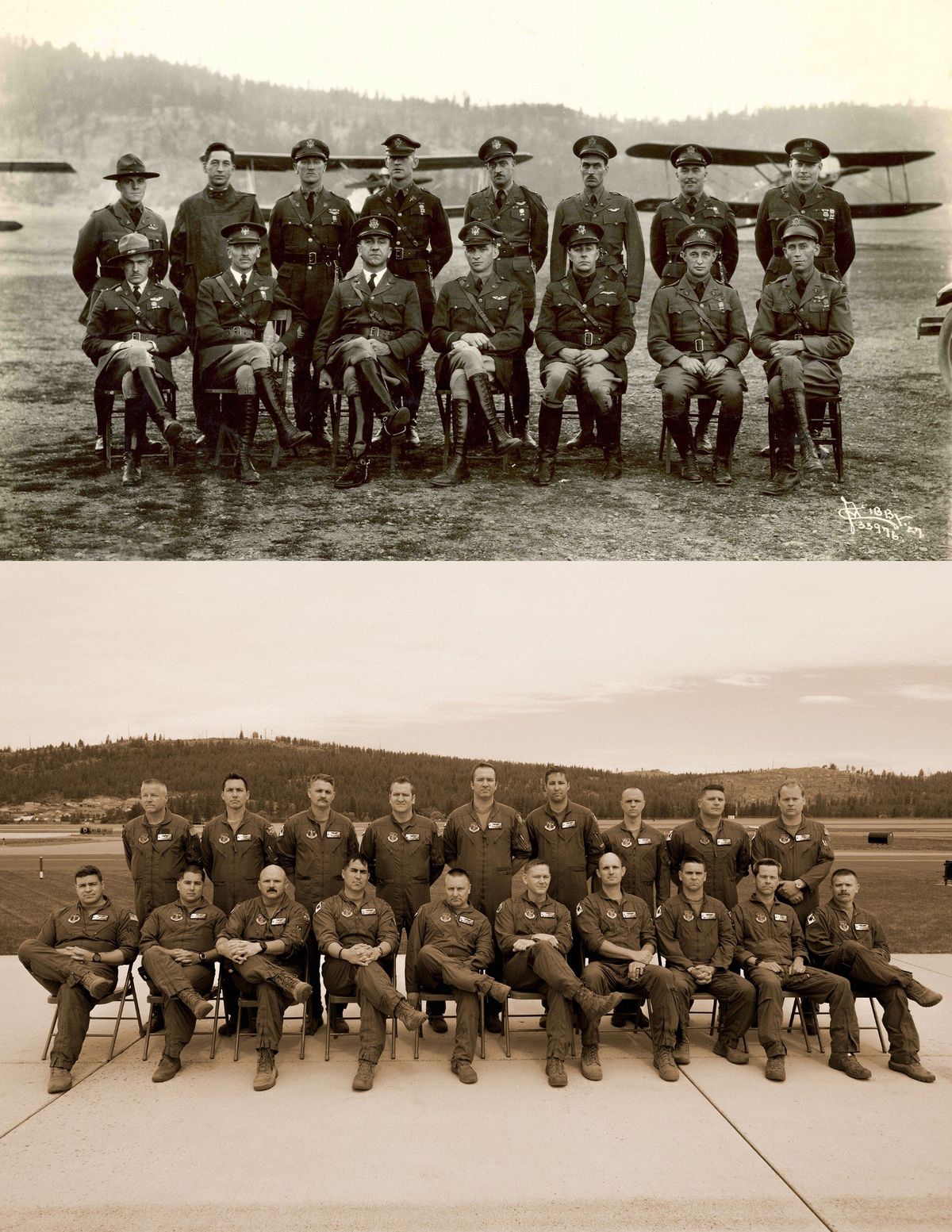‘Unscrupulous dumpster divers,’ $10,000 fueled launch of 116th Observation Squadron in Spokane

It took city leaders, mechanics, “unscrupulous dumpster divers,” grit and a quick $10,000 to launch the 116th Observation Squadron in Spokane.
Prior to 1924, Congress approved the formation of 13 National Guard squadrons, the first full-time funded and manned aviation units in the U.S. apart from active duty units, said Wes Walton, former historian for the Washington Air National Guard’s 141st Air Refueling Wing.
One of the squadrons would go to the state of Washington, but competition arose among Spokane, Seattle and Tacoma.
Maurice Thompson, adjutant general for the Washington National Guard, was given free rein to decide which city would host the squadron, Walton said. He was traveling by train at the time and stopped in Spokane.
There, he proposed that whichever city produced $10,000 to pour concrete foundations for the hangars would be awarded the squadron.
Walton said Spokane city leaders quickly contacted the Chamber of Commerce, and through various entities, local charities and private donations, Spokane raised the needed money.
Thompson was on his way to Tacoma when city leaders sent a telegram notifying the adjutant general of their successful fundraising efforts.
“We literally beat the other two cities to the punch before they even got the proposal,” Walton said.
The 116th squadron was federally recognized Aug. 6, 1924, at Parkwater Field, renamed Felts Field in 1927 after Lt. Buell Felts.
Felts, a member of the 116th, crashed a plane and died in 1927. He was 28.
Construction of the hangars started in 1925 and the 116th soon received its first airplanes, three Curtis JN-6-A2 “Jenny” aircraft, according to information provided by the 141st. The planes arrived at the railyards in crates.
Walton said the 116th wasn’t warned the planes had arrived, so local mechanics drove their own trucks to the railyards and transported them to the airfield.
Enlisted men assembled and fired up the planes with oil donated by local businesses and gasoline bought on Maj. John Fancher’s personal credit, according to the 141st.
Fancher, a World War I veteran who ran his family’s wheat farm in Medical Lake, was the unit’s first commander. Walton said several World War I veterans made up the original squadron.
Walton said there was no extra federal funding for the unit in the days before the Great Depression. He said the 116th had a reputation for being “unscrupulous dumpster divers” as they grabbed wire, metal, wood and anything they could get their hands on to repair planes.
“They scavenged everything they could,” Walton said.
In 1927, Fancher flew to New York to persuade officials for the National Air Races to sponsor that year’s race in Spokane, the 141st wrote. He succeeded, and on his way back to Spokane, he continued to garner support for aviation in the Inland Northwest by stopping at the summer home of then-President Calvin Coolidge.
The 116th was disbanded during World War II as members were dispatched to support the war effort. Walton said many 116th members flew during World War I and used their experience to train inexperienced draftees who were gearing up for World War II.
The 116th reactivated shortly after the war at Felts Field with fighter jets, so it became a fighter squadron. The unit moved in 1949 to Geiger Field, the present-day Spokane International Airport, because pilots needed a longer runway for the jets.
The squadron remained at Geiger until 1976 when the 141st Air Refueling Wing switched to flying eight KC-135 Stratotankers for air refueling missions. The shift in aircraft prompted the move to the current residence at Fairchild Air Force Base.
The 116th squadron, now named the 116th Air Refueling Squadron, is under the 141st Air Refueling Wing, which formed after the 116th.
The 141st’s history has not been without tragedy.
Four crew members of a tanker died Jan. 13, 1999, when their KC-135 went down on the way back to NATO Air Base Geilenkirchen in Germany after an air refueling mission over the North Sea. The crew members were Maj. Dave Fite, Maj. Matt Laiho, Capt. Ken Thiele and Tech. Sgt. Rich Visintainer.
“At the end, we’re all Washington Air National Guard members and everything that we are today all goes back to those first original 13 officers and 51 enlisted men flying old crated biplanes out at Felts Field back in August of 1924,” Walton said.